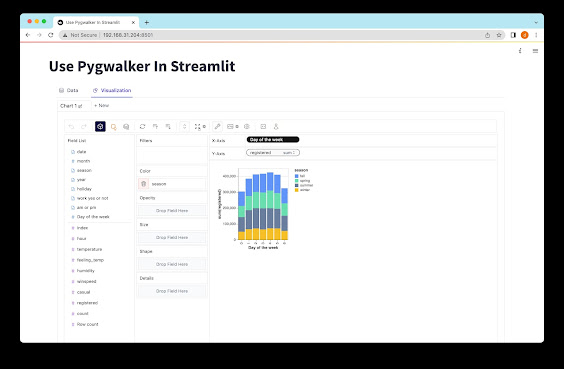Streamlit Easy Data Visualisation by Using PyGWalker

Streamlit Easy Data Visualisation by Using PyGWalker Get ready to embark on a thrilling adventure into the world of data exploration with Streamlit and Pygwalker! Discover the incredible capabilities of these two powerful Python libraries as we delve into interactive data visualization and analysis. Introducing Streamlit Streamlit is a game-changing Python library that takes the hassle out of building interactive web applications from your data scripts. Say goodbye to the complexities of web development and coding challenges! Streamlit is fast, open-source, and free, making it the perfect solution for creating and sharing data applications. What Can Pygwalker Do? Pygwalker is another fantastic Python library designed specifically for data analysis and visualization. With Pygwalker, data scientists and analysts can effortlessly generate captivating visualizations such as scatter plots, line plots, bar charts, and histograms. The best part is, you don't need any coding skills to use